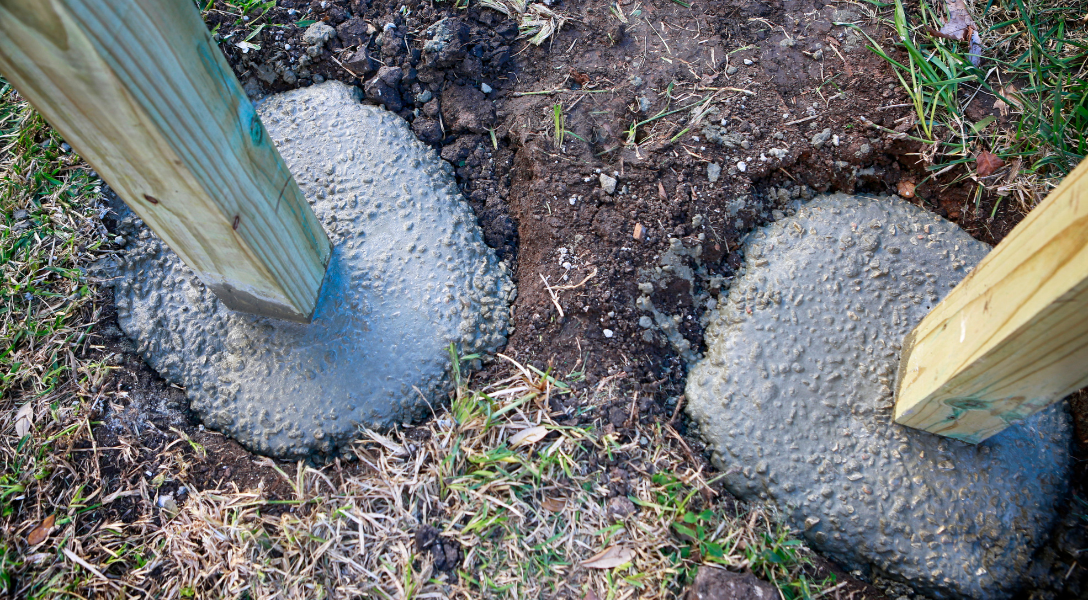Expert Tips for Setting Up Deck Footings to Support Your Outdoor Space
When it comes to developing a deck, one of the most essential aspects to think about is the installation of appropriate grounds. These footings are the structure upon which your outdoor room will rest, giving stability and support for years to come. What exactly does it take to set up deck grounds correctly?
Value of Proper Deck Grounds
Appropriate deck grounds are necessary for ensuring the stability and long life of your outdoor space. When constructing a deck, it is crucial to pay interest to the foundation on which it will relax. Deck footings offer the needed assistance for the entire framework and aid distribute the weight evenly - Deck Footings. Without solid and correctly set up grounds, your deck might become unpredictable, leading to security hazards and pricey repairs.

In enhancement to security, proper deck footings also add to the durability of your outside space (Deck Footings). Footings that are made and constructed to hold up against the aspects and dirt problems in your location will aid prevent the deck from resolving or changing over time. By making sure the footings are appropriately sized and mounted, you can decrease the danger of damage to the deck structure, prolonging its life-span and decreasing the need for expensive repair work or substitutes

Choosing the Right Sort Of Grounds
When picking the suitable kind of grounds for your deck, it is very important to think about aspects such as dirt problems, regional building ordinance, and the overall layout of your outdoor room. The kind of footing you select will play an essential role in guaranteeing the stability and long life of your deck.
One usual sort of footing is the concrete footing. Concrete footings are appropriate for a lot of dirt conditions and offer exceptional support for decks. They are commonly mounted listed below the frost line to stop changing and settling due to cold and thawing cycles. One more choice is helical piers, which are optimal for locations with unsteady dirt or high water tables. These piers are screwed right into the ground and offer strong assistance for the deck.
Sometimes, you may need to utilize specific grounds, such as pile footings or deep structures, if you are developing a multi-level or big deck. These footings are developed to disperse the weight of the deck over a bigger location, making certain security and protecting against settling or sinking.
Before picking a sort of footing, it is important to speak with local building ordinance and policies to make sure compliance. In addition, take into consideration the design and intended use your exterior space. Elements such as the dimension, shape, and load-bearing demands of your deck will influence the type of footing that is most suitable.
Preparing the Ground for Footing Setup
To properly prepare the ground for footing installment, it is necessary to assess the soil problems and take essential actions to make sure stability and longevity of the deck. The initial action is to dig deep into the location where the footings will certainly be set up. The deepness of the excavation will certainly rely on the frost line in your area and the certain needs of the deck design. It is important to get rid of any greenery, rocks, or debris from the excavation to guarantee a solid foundation.
When the location has been dug deep into, the following step is to compact the soil. This can be done using a plate compactor or by utilizing a hand meddle. Condensing the soil assists to remove any type of voids or air pockets, which can cause clearing up and instability with time.
After compacting the soil, it is important to lay a layer of gravel or crushed rock at the base of the excavation. This will offer drainage and help to protect against water from merging around the grounds, which can result in disintegration and instability.
Step-by-Step Guide to Installing Deck Footings
After properly preparing the ground for footing installment, the next step is to begin the procedure of mounting deck footings. This step-by-step overview will offer you with a clear understanding of exactly how to set up deck grounds for your exterior room.
Figure out the area: Beginning by noting the placements of the deck grounds making use of stakes and string. Guarantee that the places line up with the layout and format of your deck.
Dig the openings: Make use of an article opening miner or an auger to dig the openings for the grounds. The depth and diameter of the holes ought to remain in accordance with regional building regulations and the details demands visit this page of your deck design.
Degree the openings: Use a level to guarantee that the holes are dug to the correct depth and are level with each other. (Deck Footings)
Add crushed rock: Place a layer of gravel at the base of each hole to improve drainage and prevent the wood from deteriorating.
Put the footings: Put the footings look at here now into the openings, making sure they are degree and plumb. Make use of a level and a determining tape to make certain accuracy.
Secure the grounds: Pour concrete right into the openings around the footings, loading them to the top. Utilize a post level to guarantee the footings continue to be level as the concrete collections.
Enable time for curing: Let the concrete treatment according to the manufacturer's directions before proceeding with the deck construction.
Usual Errors to Avoid Throughout Footing Installation
One vital element to consider throughout the installation of deck grounds is staying clear of usual mistakes that can endanger the stability and durability of your outside space. While deck grounds may appear like a straightforward and basic part of the building procedure, forgeting certain variables can result in pricey repair work and possible safety and security dangers down the line.

In addition, overlooking to mount appropriate water drainage steps can cause water to collect Going Here around the footings, causing rot, degeneration, and the eventual weakening of the deck's foundation. Furthermore, utilizing the incorrect kind of footing material or falling short to properly safeguard the footings can jeopardize their architectural integrity.
To prevent these blunders, it is vital to consult with a specialist or follow market standards to make certain proper footing installation. By doing so, you can make sure the security and long life of your outdoor area, supplying a secure and pleasurable setting for several years to come.
Conclusion
Finally, setting up correct deck grounds is important for the security and long life of your exterior room. By picking the right kind of footings and properly preparing the ground, you can guarantee a solid foundation for your deck. Complying with a step-by-step guide and avoiding usual blunders throughout footing installation will certainly additionally boost the longevity and safety of your deck.
Correct deck footings are essential for making certain the security and durability of your exterior space. The footings offer as a connection in between the ground and the deck, permitting the weight of the deck and its passengers to be distributed equally right into the dirt.One typical type of ground is the concrete ground. Insert the footings: Position the grounds right into the holes, making certain they are level and plumb. Safeguard the grounds: Put concrete into the openings around the footings, loading them to the top.
 Taran Noah Smith Then & Now!
Taran Noah Smith Then & Now! Kelly McGillis Then & Now!
Kelly McGillis Then & Now! Earvin Johnson III Then & Now!
Earvin Johnson III Then & Now! Robbie Rist Then & Now!
Robbie Rist Then & Now! McKayla Maroney Then & Now!
McKayla Maroney Then & Now!